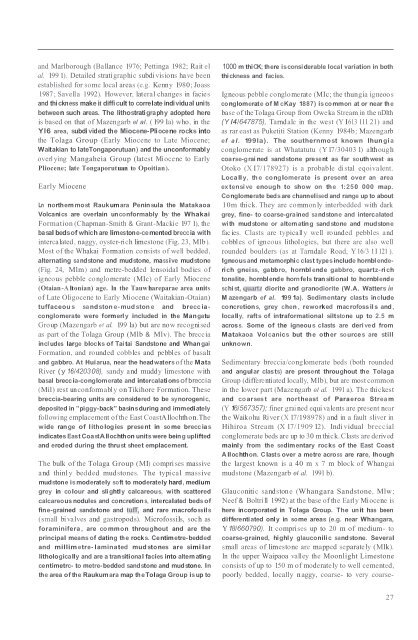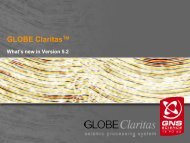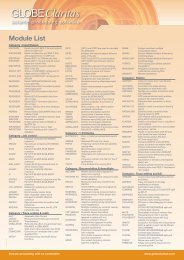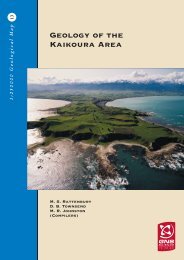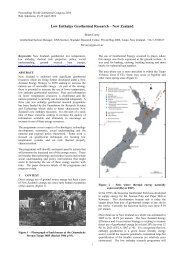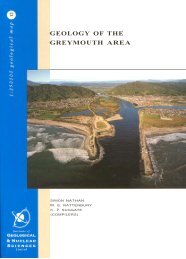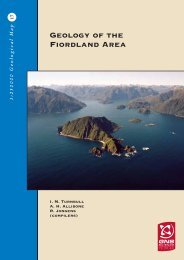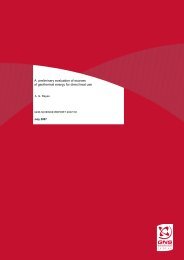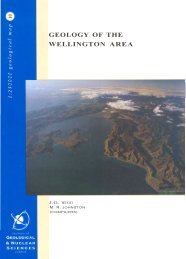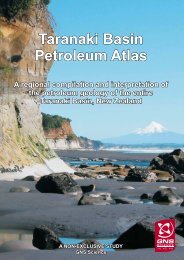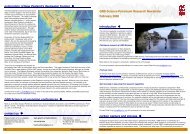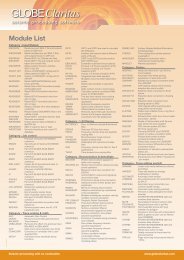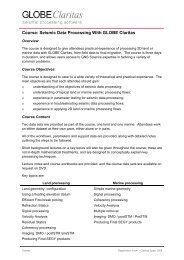GEOLOGY OF THE - GNS Science
GEOLOGY OF THE - GNS Science
GEOLOGY OF THE - GNS Science
You also want an ePaper? Increase the reach of your titles
YUMPU automatically turns print PDFs into web optimized ePapers that Google loves.
and Marlborough (Ballance 1976; Pettinga 1982; Rait elal. 199 1). Detailed stratigraphic subdi visions have beenestablished for some local areas (e.g. Kenny 1980; Joass1987; Savella 1992). However, lateral changes in faciesand thickness make it difficult to correlate individual uni tsbetween such areas. The lithostrati graphy adopted hereis based on that of Mazengarb el al. ( 199 1a) who, in theYl6 area, subdi vided the Miocene-Pliocene rocks intothe Tolaga Group (Early Miocene to Late Miocene;Waitakian to lateTongaporutuan) and the unconformablyoverl ying Mangaheia Group (latest Miocene to EarlyPliocene; late Tongaporutuan to Opoitian).Early MioceneLn northern most Raukumara Peninsula the MatakaoaVolcani cs are overlain unconformably by the WhakaiFormation (Chapman-Smith & Grant-Mackie 197 1), thebasal bedsof which are limestone-cemented breccia withintercalated, naggy, oyster-rich limestone (Fig. 23, Mlb).Most of the Whakai Formation consists of well bedded,alternating sandstone and mudstone, massive mudstone(Fig. 24, Mlm) and metre-bedded lensoidal bod ies ofigneous pebble conglomerate (MIc) of Early Miocene(Otaian-A ltonian) age. In the Tauwhareparae area unitsof Late Oligocene to Early Miocene (Waitakian-Otaian)tuffaceous sa ndstone-mudston e and brecc iaconglomeratewere formerl y included in the MangatuGroup (Mazengarb e1 al. 199 1a) but are now recognisedas part of the Tolaga Group (Mlb & Mlv). The brecciaincl udes large blocks of Tai tai Sandstone and WhangaiFormation, and rounded cobbles and pebbles of basaltand gabbro. At Huiarua, near the head watersofthe MataRiver (y 16/420308), sandy and muddy limestone withbasal brecc ia-conglomerate and intercalati onsofbreccia(Mil) rest unconformably on Tikihore Formation. Thesebreccia-bearing units are considered to be synorogenic,deposited in "piggy-back" basinsduring and immediatelyfollowing emplacement of the East CoastAllochthon.Thewide ran ge of litholog ies present in so me brecc iasindicates East CoastAllochthon units were being upliftedand eroded during the thrust sheet emplacement.The bulk of the Tolaga Group (MI) compri ses massiveand thinly bedded mudstones. The typi cal massivemudstone is moderately soft to moderately hard, mediumgrey in colour and sli ghtly calcareous, with scatteredcalcareous nodules and concretion s, intercalated bedsoffine-grained sandstone and tuff, and rare macrofossils(small bi valves and gastropods). Microfossils, soch asforaminifera, are co mmon throughout and are theprincipal means of dating th e rocks. Centimetre-beddedand millimetre- laminated mudstones are simi larlithologically and are a transitional facies into altern atingcentimetrc- to metre-bedded sandstone and mudstone. Inthe area of the Raukumara map th eTolaga Group is up to1000 m thiCK; there isconsiderable local variation in boththi ckness and facies.Igneous pebble conglomerate (MIc; the thungia igneoosconglomerate of M cKay 1887) is common at or near th ebase of the Tolaga Group from Oweka Stream in the nDlth(Y I4/647875), Tarndale in the west (Y I613 111 21) andas rar east as Puketiti Station (Kenny 1984b; Mazengarbef a l . 199Ia). The southernmost known Ihungiaconglomerate is at Whatatutu (Y17/30403 1) althoughcoarse-grai ned sandstone present as far south west asOtoko (X I7/178927) is a probable di stal eqoivalent.Locall y, th e conglomerate is present over an areaex tensi ve enough to show on th e 1: 250 000 map.Conglomerate beds are channelised and range up to about10m thick. They are common ly interbedded with darkgrey, fine- to coarse-grained sandstone and intercalatedwi th mudstone or altern atin g sand stone and mudstonefac ies. Clasts are typicall y well rounded pebbles andcobbles of igneous lithologies, but there are also wellrounded boulders (as at Tarndale Road, Y16/3 1I 121 ).Igneousand metamorphic clast typesinclude hornbl enderich gneiss, gabbro, hornbl ende gabbro, quartz-ri chtonalite, hornbl ende horn fels tran sitional to hornblendeschi st, qUaJ1Z diorite and granodiorite (W.A. Watters inM azengarb ef al. 199 1a). Sedimentary clasts includeconcretions, grey chen , reworked macrofoss il s and ,locall y, rafts of intraformational siltstone up to 2.5 macros s. Some of the igneous clasts are deri ved fromMatakaoa Volcanics but th e oth er sources are stillunknown.Sedimentary breccia/conglomerate beds (both roundedand angular clas ts) are present throughout the TolagaGroup (differentiated locall y, Mlb), but are most commonin the lower part (Mazengarb el al. 1991 a). The thickestand coarses t are northeast of Paraeroa Stream(Y 16/567357); finer grai ned equi valents are present nearthe Waikohu Ri ver (X 17/198978) and in a fault sliver inHihiroa Stream (X 17/1909 12). Indi vidual breccialconglomerate beds are up to 30 m thick. Clasts are derivedmainly from the sedimentary rocks of the East CoastA llochthon. C lasts over a metre across are rare, lhoughthe largest known is a 40 m x 7 m block of Whangaimudstone (Mazengarb el al. 1991 b).Glauconitic sandstone (Whangara Sandstone, Mlw;Neef & Boltri ll 1992) at the base of the Earl y Miocene ishere incorporated in Tolaga Group. The un it has beendifferentiated only in some areas (e.g. near Whangara,Y18/660790). It comprises up to 20 m of medium- tocoarse-grained, highly glauconilic sandstone. Severalsmall areas of limestone are mapped separately (Mlk).In the upper Waipaoa valley the Moonlight Limestoneconsists of up to 150 m of moderately to well cemented,poorly bedded, locally n aggy, coarse- to very coarse-27


